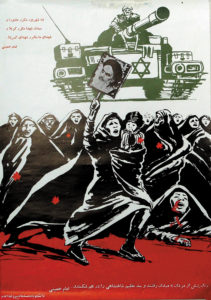17th Shahrivar uprising : Our Martyrs Are An Extension of the Martyrs of Karbala
September 29th, 2016
The 17th of Shahrivar Uprising in Tehran that took place on 8 September 1978 was a turning point in the history of the Islamic Revolution, and it can be regarded as one of the most important events that determined the path and direction of the Iranian people’s movement against the British-installed and US-supported Pahlavi monarchy. It is also known as Black Friday since the Shah’s forces martyred as many as four thousand defenceless men, women and children at Jhaleh Square, which is known today as Maidan-e Shohada or Martyrs’ Square.
The first sparks of the Islamic Revolution in Iran were lit in 1963 when on Khordad 15 or June 5, the people throughout the country rallied in defence of the Father of the Islamic Revolution, Imam Khomeini (God bless his soul), against the hated Pahlavi regime. The Imam was exiled – first to Turkey and then to Iraq – but the movement he had started, continued to flourish. When the regime made the fatal mistake of insulting Imam Khomeini in an article in the Persian daily Ettella’at, the people of Qom protested publicly and offered martyred as the security forces fired upon them.
Some 40 days later on 31st December 1977 when the people of Tabriz staged a huge rally to commemorate the sacrifices of the people of Qom, the regime made the fatal mistake of turning the peaceful demonstration into a bloodbath. This added fuel to the fire of the Islamic Revolution, and on the 40th of this bloodbath, people in other cities rose against the regime and offered more martyrs, as the security forces thought that machinegun fire would quell their aspirations. For months, this became the routine throughout Iran. The Shah dismissed Prime Minister Jamshid Amouzegar and replaced him with Ja’far Sharif Imami in a bid to calm down the people’s anger.
During his short tenure, Sharif-Imami was ordered by the Shah to close casinos, gambling dens, nightclubs, and red light districts, in addition to scrapping the so-called Imperial calendar initiated three years ago, as well as abolishing the Rastakhiz Party and allowing all political parties to be active. These measures were meant eyewash in a bid to deceive the Iranians, but thanks to the resoluteness of Imam Khomeini and the awareness of the people, the Shah’s plots were neutralized.
At the same time, the regime declared martial law in order to prevent the people from protesting in the streets. The people’s will could not be broken, as thousands of peaceful demonstrators began to assemble at Jhaleh Square on 8th September, calling for the end of the tyrannical monarchist system and return home from exile, of the Father of the Islamic Revolution, Imam Khomeini. The military forces suddenly surrounded the people, and started firing upon them, causing a bloodbath, at the behest of the US. In the aftermath of these bloody events, the whole country erupted against the atrocities of the regime.
The event triggered protests that continued for another four months. The day after Black Friday, 9 September 1978, the long time confidante of the Shah and former Prime Minister, Amir Abbas Hoveyda, resigned as minister of court. A general strike in October shut down the petroleum industry that was essential to the regime’s survival as oil industry workers joined the nationwide protests, thereby sealing the fate of the detested Pahlavi regime.
Continuation of protests ultimately led to Shah fleeing Iran on 16 January 1979. On February 1, Imam Khomeini returned to Iran after 14 years of exile and was greeted by millions of people at Mehrabad Airport. The rest is history, as during the 10-day dawn, the Islamic Revolution triumphed, ending the monarchy and heralding the birth of the Islamic Republic of Iran.
In the aftermath of Black Friday the Shah was bewildered. He sent a message to godfather US through Iran’s ambassador in Washington, Ardeshir Zahedi, and was told by the White House to form a military cabinet led by General Gholam Reza Azhaari. Mohammad Reza failed to realize that the US could not do anything to save him.
Despite all the concession he had given the US, including acceptance of the bill of capitulation making Americans immune from prosecution in Iran even if they commit crimes, the Americans were powerless in the face of the tidal wave of the Islamic Revolution generated by Imam Khomeini.
The 40 thousand odd American military personnel in Iran were useless, and so was the backing of the Shah by the illegal Zionist entity. After 17th Shahrivar event, US president Jimmy Carter spoke with the Shah and assured him of his support. Two day after the 17th Shahrivar incident, Iran’s ambassador to the US Ardeshir Zahedi met with US undersecretary of state Warren Christopher in Washington, and said the people were intent on overthrowing the Pahlavi regime.
Christopher disagreed with such a notion and said weakening Shah self-confidence at this sensitive time is the most important cause for spreading of what he called riots. None of the US political and spying agencies consider Iran’s situation to be serious. In short, God Almighty made the people of triumph victorious against an armed-to-the-teeth regime.
